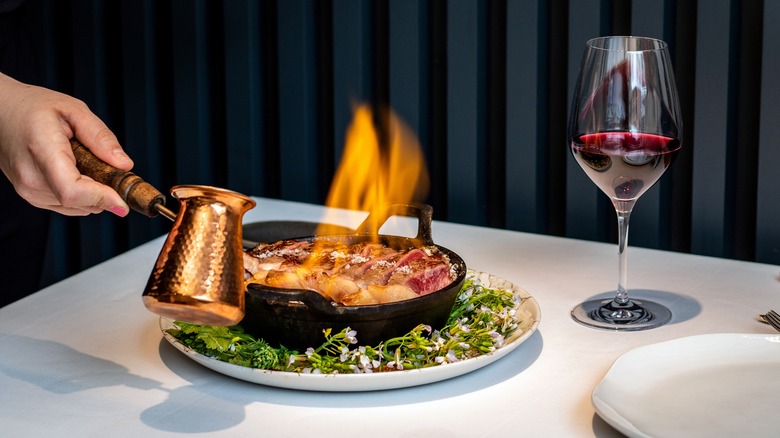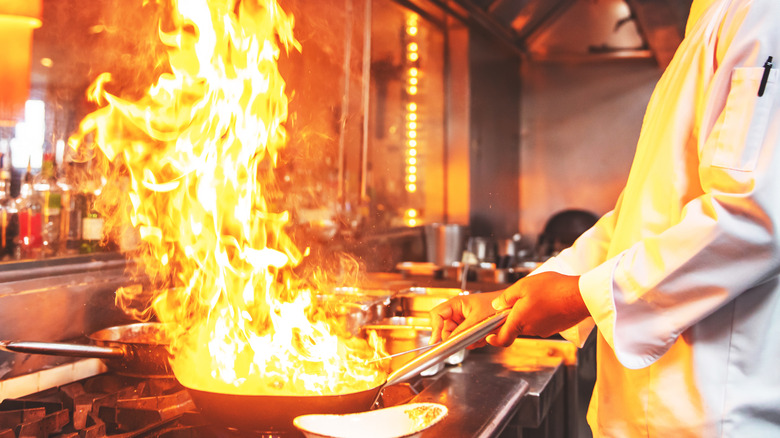When Flambéing A Dish, Never Pour Booze Straight From The Bottle
A flambé, whether dessert or dinner, has long been considered a fun — and fiery — culinary experience. In fact, a flambé is among the most entertaining of tableside dining options: one of Tasting Table's best food trends of 2023. At the JW Marriott in Grand Rapids, Michigan, for example, French restaurant Margaux serves a flambéd fruit-based dessert that blurs the line between a banana flambé and bananas foster. Yet regardless of the specifics, the key to the fire-based dessert is in the booze, which bears responsibility for that flame. You therefore shouldn't pour any alcohol directly from the bottle onto the dessert, which can result in an out-of-hand flambé.
To circumvent safety concerns, it's best to pour your alcohol into an intermediary vessel, like a cup. Taking this extra step allows you to be more methodical with the amount of alcohol you're using — especially because you don't need much to make an impact. In fact, all it takes is about a tablespooon of booze per flambé serving.
This step likewise increases your control over the state of your fire. In pouring alcohol before pouring it anywhere near your dessert, you can limit the chances of that liquor going haywire. Meaning, you can avoid creating a too-large fire that creeps a little too closely to your body. In addition to your pouring technique, the nature of your alcohol matters. To pull off a controlled — but effective — flambé, choose your liquor with equal care.
Control your fire by controlling your cup -- and choice -- of alcohol
Working with fire can be daunting, but follow the steps for safely flambéing and you'll have a dessert that's delicious, exciting, and danger-free. Before you can even think about starting a fire, however, you need to choose your liquor. Even though you're not adding a lot of alcohol, you'll want the spirit's flavors to mesh well with the nature and flavors of your chosen flambé recipe. Now's, therefore, the time to strategize based on your ingredients and pair your alcohol by flavor and proof.
For instance, many flambé recipes utilize rum, cognac, or brandy, which are particularly common for any and all banana-based desserts. Gin and vermouth likewise do the job. No matter the specifics, it's generally ideal to choose an alcohol that's high proof and therefore more susceptible to catching on fire. Anything around 80-proof should be a safe bet.
Once you make your choice, you can jump right in and assemble your flambé. With the right alcohol — first poured into a cup — you'll direct the flame to the dessert, rather than to you.

